



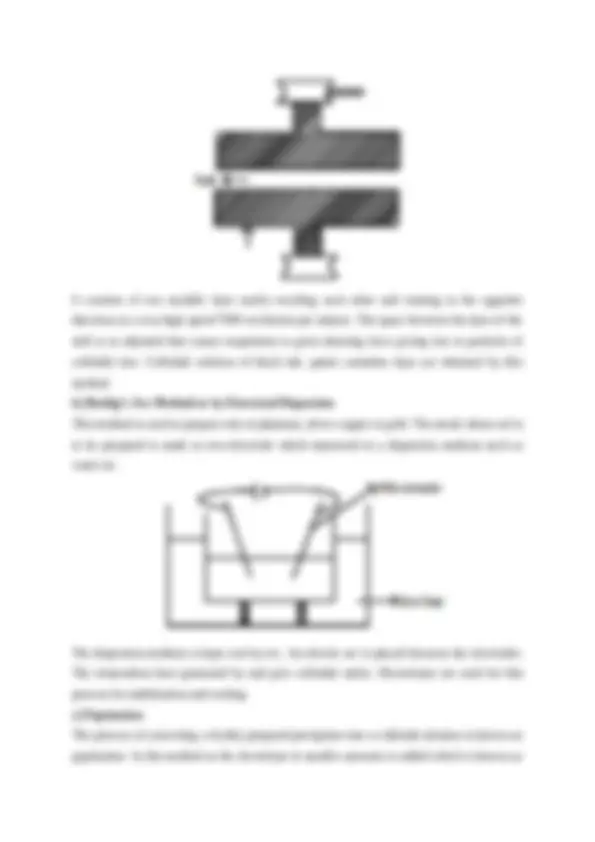

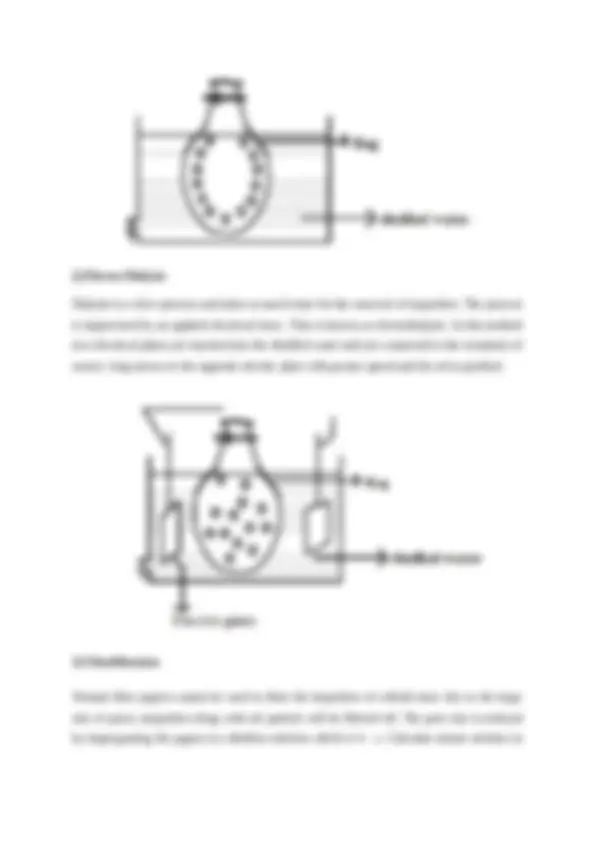

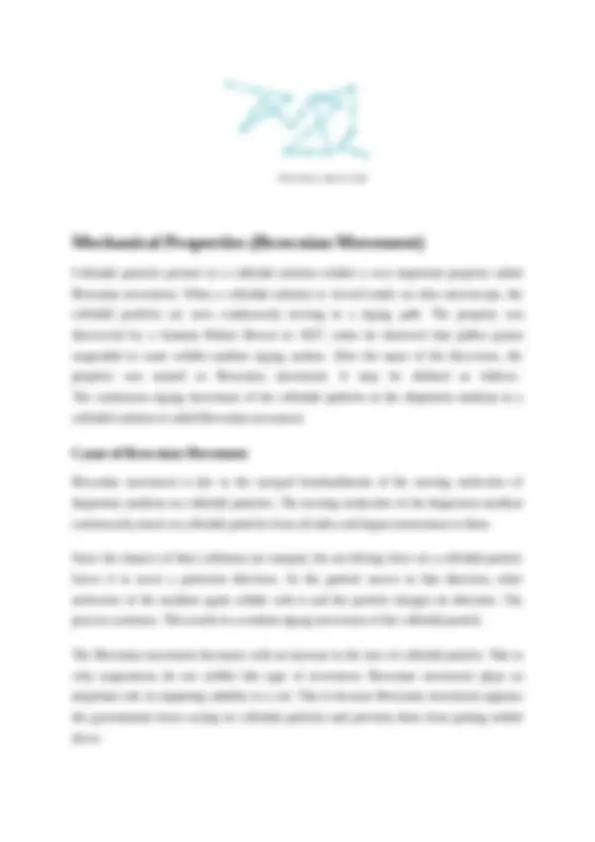



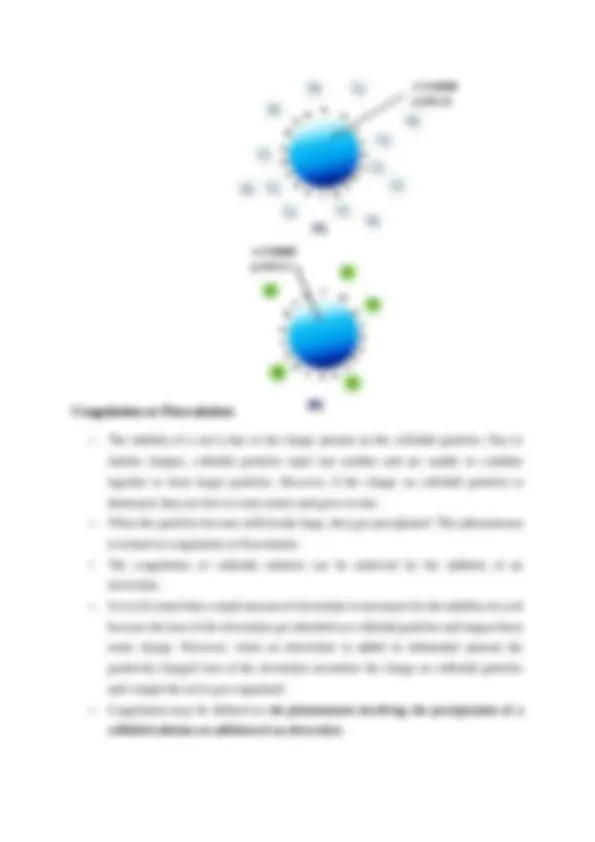
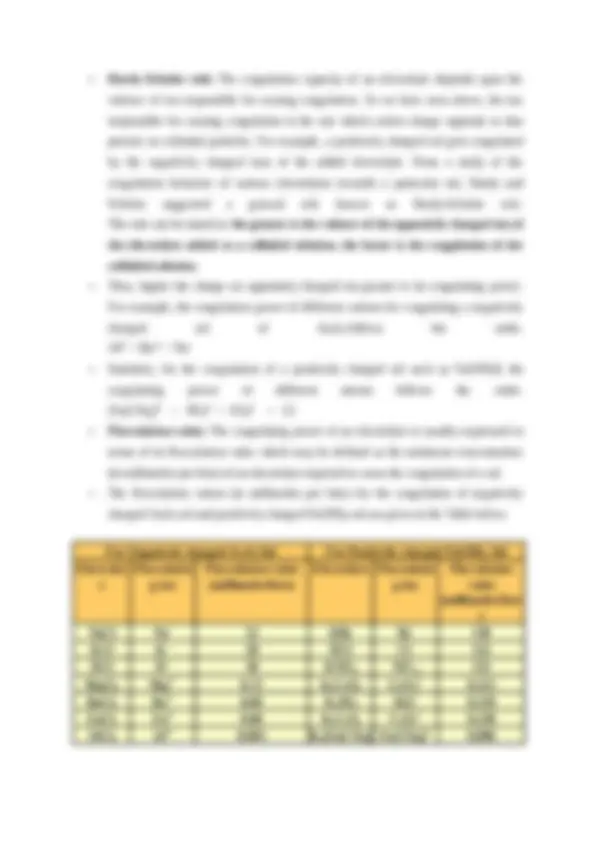
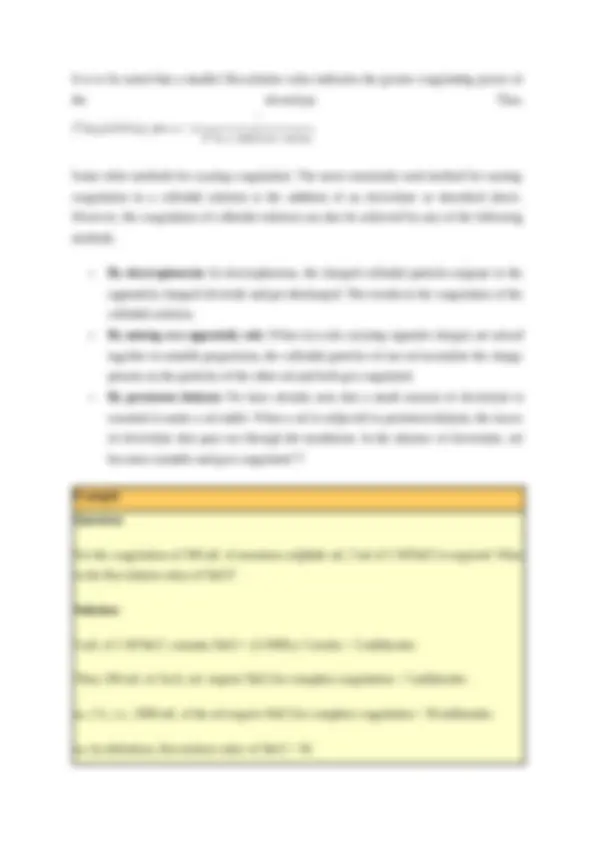
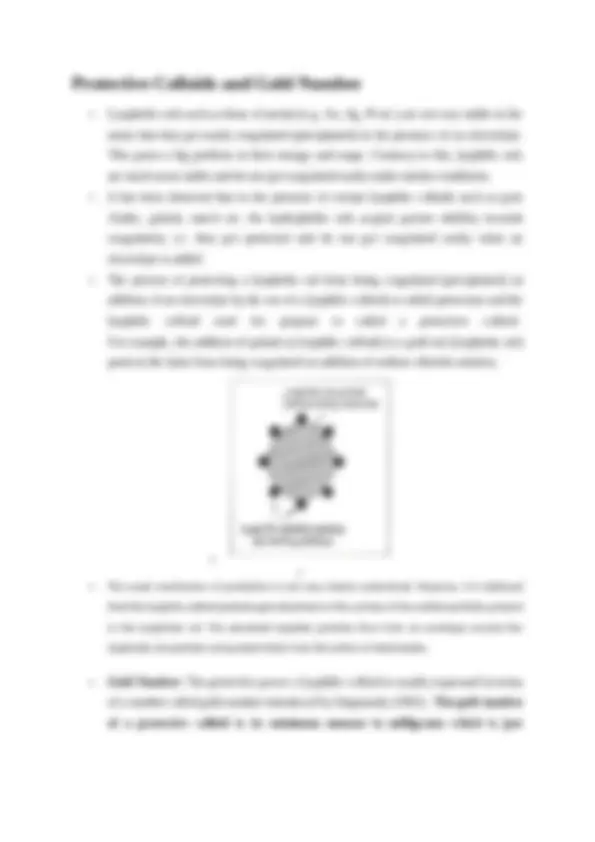




Study with the several resources on Docsity

Earn points by helping other students or get them with a premium plan


Prepare for your exams
Study with the several resources on Docsity

Earn points to download
Earn points by helping other students or get them with a premium plan
Community
Ask the community for help and clear up your study doubts
Discover the best universities in your country according to Docsity users
Free resources
Download our free guides on studying techniques, anxiety management strategies, and thesis advice from Docsity tutors
The colloid notes can help you to understand bsc course.to learn basic concepts of colloid and inorganic chemistry.you can understand the pattern and the year of 2025 subject chemistry and mohanlal Sukhadia University notes.
Typology: Study notes
1 / 25

This page cannot be seen from the preview
Don't miss anything!


















Syllabus Colloidal State - Definition of colloids, classification of colloids. Solids in liquid (sols): Properties - kinetic, optical and electrical, stability of colloids, protective action, Hardy- Schulze law, gold number. Liquids in Liquid (emulsions): Types of emulsions, preparation, emulsifier, Liquids in solid (gels)- classification, preparation and properties, inhibition, general applications of colloids.
Colloids (also known as colloidal solutions or colloidal systems) are mixtures in which microscopically dispersed insoluble particles of one substance are suspended in another substance. The size of the suspended particles in a colloid can range from 1 to 1000 nanometres (10-9^ metres). For a mixture to be classified as a colloid, its suspended particles must not settle (in the manner that the particles of suspensions settle at the bottom of the container if left undisturbed). Colloidal solutions are known to exhibit the Tyndall Effect, which is a phenomenon in which beams of light incident on colloids are scattered due to the interactions between the light and the colloidal particles. The IUPAC definition of the colloidal state can be written as follows: “ The colloidal state is the state of subdivision in which molecules or polymolecular particles having at least one dimension in the range of 1 nanometre and 1 micrometre, are dispersed in some medium .” Colloids usually feature substances that are evenly dispersed in another. In such mixtures, the substance that is dispersed is referred to as the dispersed phase whereas the substance through which it is dispersed is called the continuous phase.
In simple terms, we can define colloids as a mixture where one of the substances is split into very minute particles which are dispersed throughout a second substance. The minute particles are known as colloidal particles. Alternatively, we can also say that colloids are basically solutions in which solute particle size ranges from 1nm – 1000 nm. Classification of Colloids Colloids are classified into many types. Classification Based on Physical State Classification Based on Dispersion Medium Classification Based on Interaction Forces Classification Based on Properties/size of Sol Particle Multimolecular colloids Macromolecular colloids Associated colloids
A most common method of classifying colloids is based on the phase of the dispersed substance and what phase it is dispersed in. The types of colloids includes sol, emulsion, foam, and aerosol. Table: Classification of Colloids Dispersed Phase Dispersion Medium Type of Colloid Example Solid Solid Solid sol Ruby glass Solid Liquid Sol Paints, cell fluids Solid Gas Aerosol Smoke Liquid Solid Solid emulsion/gel Pearl, cheese, butter, jelly Liquid Liquid Emulsion Milk, oil in water Liquid Gas Liquid Aerosol Fog, mist, cloud Gas Solid Solid foam Lava, pumice, foam rubber Gas Liquid Foam Soap suds, whipped cream (a) Solid Solution
On the basis of interaction forces between the dispersion medium and dispersed phase- Lyophobic Sols: [Emulsoid] These are less stable sols. A weak interaction is present between the dispersed phase and the dispersion medium. Eg.-Metallic sols like Ag, gold etc. Following are the characteristics of lyophobic sols. a) Surface Tension: It is same as that of the medium. b) Viscosity: It is the same as that of the medium. c) Irreversible: These are irreversible colloids when once dispersion medium is evaporated and again when the solvent is added no new sol is formed. d) Stability: There is weak interaction between the dispersed phase and dispersion medium hence lyophobic sols are unstable. e) Visibility: Particle can be detected using ultramicroscope. f) Migration: Particle migrates either colloid an anode depending upon the charge of sol particle. g) Action of electrolyte: When the electrolyte is added to sol, coagulation takes place. h) Hydration: No hydration of sol takes place. Lyophilic Sols These are stable strong sols. A strong interaction is present between the dispersed phase and the dispersion medium. Example: gum, gelatin, starch. Following are the characteristics of lyophilic sols. a) Surface tension: Lower than that of the medium. b) Viscosity: Higher than medium. c) Reversibility: These are reversible sols. When dispersion medium is evaporated and the solvent is added again the same type of sol is formed. d) Stability: More stable due to strong interaction between the dispersed phase and the dispersion medium. e) Visibility: The particles are visible under an electron microscope. f) Addition of electrolyte: Small amount of electrolyte is required for the formation of sol. g) Hydration: Extensive hydration takes place.
Depending upon how different substances forming colloidal solution acquire the size of particles in this range, colloidal solutions may be classified into the following three categories. Classification of sols on the basis of properties is given as- Multi Molecular Colloids A solution occurs atoms or smaller molecules of substance (having a diameter less than 1nm) aggregate together to form particles of colloidal dimensions. The particles thus formed are called multimolecular colloids. In these sols, the dispersed phase consists of aggregates of atoms or molecules with a molecular size less than 1 atm. For example sols of gold atoms and sulphur (S (^) f) molecules. In these colloids, the particles are held together by physical forces called Van der Waals forces. Metallic sols are usually multimolecular sols prepared by Bredig’s are melted. These are usually lyophobic unstable, and separation is early possible. Macromolecular Colloids These are substances having big size molecular called macromolecular which on demolition form size in the colloidal ran such substance are called macromolecular colloids. Thus macromolecule forming the dispersed phase are generally polymers having very high molecular masses. Naturally occurring macromolecular are starch, cellulose proteins, enzyme gelatin etc. Artificial macromolecular and synthetic polymers such as nylon, polyester, plastics, polishers etc. They have usually lyophobic sols. Associated Colloids (Micelles) : Certain colloids behave as strong electrolytes at lower concentrations but exhibit colloidal properties at higher concentrations. At a particular concentration, the molecules of dispersed phase align in such a way as to form micellar structures. This particular concentration is known as critical micellar concentration. The colloids that form micelles are known as associated colloids.
Many salt solutions are rapidly hydrolysed by boiling a dilute solution of their salts. For example, ferric hydroxide and aluminium hydroxide sols are obtained by boiling solutions of the corresponding chloride. FeCl 3 + 3H 2 O → Fe(OH) 3 + 3HCl colloidal sol Silicic acid sol is obtained by the hydrolysis by sodium silicate. f) By excessive cooling: A colloidal sol of ice is obtained in this process. Ice is taken in an organic solvent like chloroform ether. Sol of ice is obtained by freezing a solution of water in the solvent. The molecules of water are no longer in the solution separately combine to form particles of colloidal size. h) By exchange of solvent: In this process, colloidal sol of certain substances such as sulphur, phosphorus which are soluble in alcohol but insoluble in water can be prepared by pouring their alcoholic solution into water. For enough alcoholic solution of sulphur on pouring into water gives a milky colloidal solution of sulphur. i) By change of physical state: Sols of substance like mercury and sulphur are prepared by passing the vapour through cold water containing a suitable stabilizer such as ammonium salt or citrate.
In these methods, large particles of a substance (suspension) are broken into smaller particles. The following methods are employed. a) Mechanical dispersion In this method, the substance is first grounded to coarse particles. It is then mixed with dispersion medium to get a suspension. The suspension is then grinded in a colloidal mill.
It consists of two metallic dyes nearly touching each other and rotating in the opposite direction at a very high speed 7000 revolution per minute. The space between the dyes of the mill is so adjusted that coarse suspension to great shearing force giving rise to particles of colloidal size. Colloidal solution of black ink, paints varnishes dyes are obtained by this method. b) Bredig’s Arc Method or by Electrical Dispersion This method is used to prepare sols of platinum, silver copper or gold. The metal whose sol is to be prepared is made as two-electrode which immersed in a dispersion medium such as water etc. The dispersion medium is kept cool by ice. An electric arc is placed between the electrodes. The tremendous heat generated by and give colloidal solute. Electrolytes are used for this process for stabilization and cooling. c) Peptization The process of converting a freshly prepared precipitate into a colloidal solution is known as peptization. In this method as the electrolyte in smaller amounts is added which is known as
2) Electro Dialysis Dialysis is a slow process and takes so much time for the removal of impurities. The process is improvised by an applied electrical force. This is known as electrodialysis. In this method two electrical plates are inserted into the distilled water and are connected to the terminals of source, long moves to the opposite electric plate with greater speed and the sol is purified. 3) Ultrafiltration Normal filter papers cannot be used to filter the impurities of colloid since due to the large size of pores, impurities along with sol particle will be filtered off. The pore size is reduced by impregnating the papers in collodion solution which is 4 – s. Calculate nitrate solution in
alcohol – ether mixture and dried with acetaldehyde. This is known as ultrafiltration and such papers are known as ultrafilter papers. **Examples of Colloids
Optical Properties of Colloids (Tyndall Effect) When an intense converging beam of light is passed through a colloidal solution kept in dark, the path of the beam gets illuminated with a bluish light. This phenomenon is called Tyndall effect and the illuminated path is known as Tyndall cone. The phenomenon was first observed by Tyndall in 1869. The Tyndall effect is due to the scattering of light by colloidal particles. Since the dimensions of colloidal particles are comparable to the wavelength of ultraviolet and visible radiations, they scatter these and get illuminated. Tyndall observed that the zone of scattered light is much larger than the particle itself. This is why colloidal particles look like bright spots when viewed with a microscope at right angles to the beam of light as shown in figure. Thus, Tyndall effect may be defined as the scattering of light by colloidal particles present in a colloidal solution. Tyndall effect is not exhibited by true solutions. This is because the particles (ions or molecules) present in a true solution are too small to scatter light. Thus, Tyndall effect can be used to distinguish a colloidal solution from a true solution. The phenomenon has also been used to devise an instrument known as ultra microscope. The instrument is used for the detection of the particles of colloidal dimensions. Tyndall effect also establishes the fact that colloidal systems are heterogeneous in nature.
Mechanical Properties (Brownian Movement) Colloidal particles present in a colloidal solution exhibit a very important property called Brownian movement. When a colloidal solution is viewed under an ultra microscope, the colloidal particles are seen continuously moving in a zigzag path. The property was discovered by a botanist Robert Brown in 1827, when he observed that pollen grains suspended in water exhibit random zigzag motion. After the name of the discoverer, the property was named as Brownian movement. It may be defined as follows. The continuous zigzag movement of the colloidal particles in the dispersion medium in a colloidal solution is called Brownian movement.
Brownian movement is due to the unequal bombardments of the moving molecules of dispersion medium on colloidal particles. The moving molecules of the dispersion medium continuously attack on colloidal particles from all sides and impart momentum to them. Since the chances of their collisions are unequal, the net driving force on a colloidal particle forces it to move a particular direction. As the particle moves in that direction, other molecules of the medium again collide with it and the particle changes its direction. The process continues. This results in a random zigzag movement of the colloidal particle. The Brownian movement decreases with an increase in the size of colloidal particle. This is why suspensions do not exhibit this type of movement. Brownian movement plays an important role in imparting stability to a sol. This is because Brownian movement opposes the gravitational forces acting on colloidal particles and prevents them from getting settled down.
Origin of Charge on Colloidal Particles There are several views regarding the origin of charge on colloidal particles. According to these views, colloidal particles acquire charge due to the following reasons. Due to dissociation of the adsorbed molecular electrolytes: Colloidal particles have a strong tendency to adsorb reactant or product molecules. The molecules thus adsorbed on the surface of colloidal particles may undergo dissociation/ionization and may impart charge to them. For example, during the preparation of sulphide sols (e.g., As 2 S 3 sol), H 2 S molecules get adsorbed on colloidal particles. H 2 S molecules thus adsorbed undergo ionization and release H +^ ions into the medium. Consequently, colloidal particles are left with negative charge. Due to the dissociation of molecules forming colloidal aggregates: The molecules responsible for the formation of aggregates of colloidal dimensions may themselves undergo dissociation/ionisation resulting in the development of charge on the colloidal particles formed by their aggregation. For example, the soap molecules (RCOONa) dissociate to give RCOO -^ and Na +^ ions. RCOO -^ ions aggregate together to form micelles which carry negative charge as explained earlier. Due to preferential adsorption of ions from solutions: The colloidal particles have a tendency to preferentially adsorb a particular type of ions from the solution. A colloidal particle usually adsorbs those ions which are in excess and are common to its own lattice. This preferential adsorption of a particular type of ions imparts a particular type of charge to colloidal particles. For example, when a ferric hydroxide sol is prepared by the hydrolysis of ferric chloride in warm water, the colloidal particles of Fe(OH) 3 formed have a tendency to adsorb preferentially the Fe 3+^ ions present in the solution. This is because Fe 3+^ ions are common to the lattice of Fe(OH) 3 particle. The Fe 3+^ ions thus adsorbed impart positive charge to the colloidal particles present in the sol. Fe(OH) 3 + Fe3+^ → Fe(OH) 3 : Fe3+ (colloidal (ions common preferential adsorption of Fe3+^ ions
particle) to the lattice of (colloidal particle acquires colloidal particle) positive charge) Similarly, during the preparation of AgCl sol using excess of KCl solution, the Cl – ions are preferentially adsorbed and the colloidal particles acquire negative charge. However, if an excess of AgNO 3 is used, Ag + ions get preferentially adsorbed and the colloidal particles acquire positive charge. AgCI + CI-^ → AgCI : CI- (colloidal) (Chloride ions present Preferential adsorption of CI-^ ions particle) in excess in the solution) (Collodial particle acquires negative charge) AgCI + Ag+^ → AgCI : Ag+ (colloidal) (Silver ions present in Preferential adsorption of Ag+ions particle) excess in the solution) (Collodial particle acquires positive charge)
Due to the presence of a particular type of electrical charge, the colloidal particles present in a colloidal dispersion move towards a particular electrode under the influence of an electric field. The direction of movement of the colloidal particles is decided by the nature of charge present on them. If the colloidal particles carry positive charge, they move towards cathode when subjected to an electric field and vice versa. The phenomenon is called electrophoresis and may be defined as the movement of colloidal particles towards a particular electrode under the influence of an electric field.
The phenomenon can be explained as follows : We have already seen that the colloidal particles and dispersion medium carry charges which are equal but opposite in nature. Under the influence of an electric field, both have a tendency to move towards the oppositely charged electrodes. Semi permeable membranes do not allow the passage of colloidal particles. However, dispersion medium can pass through them. Therefore during electro-osmosis, colloidal particles are checked and it is the dispersion medium that moves towards the oppositely charged electrode.
The stability of a sol is due to the charge present on the colloidal particles. Due to similar charges, colloidal particles repel one another and are unable to combine together to form larger particles. However, if the charge on colloidal particles is destroyed, they are free to come nearer and grow in size. When the particles become sufficiently large, they get precipitated. This phenomenon is termed as coagulation or flocculation. The coagulation of colloidal solution can be achieved by the addition of an electrolyte. It is to be noted that a small amount of electrolyte is necessary for the stability of a sol because the ions of the electrolyte get adsorbed on colloidal particles and impart them some charge. However, when an electrolyte is added in substantial amount the positively charged ions of the electrolyte neutralize the charge on colloidal particles and compel the sol to get coagulated. Coagulation may be defined as t he phenomenon involving the precipitation of a colloidal solution on addition of an electrolyte.